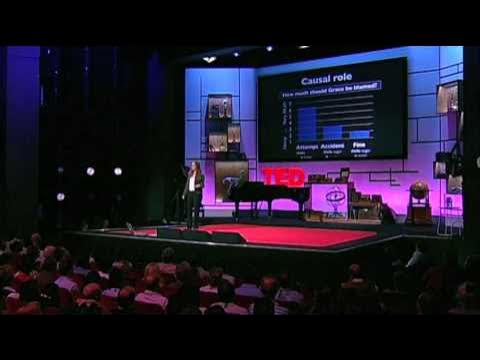Inductive and Deductive Reasoning || Mathematics in the Modern World
Summary
TLDRIn this educational video, Ram explores the concept of reasoning, a fundamental human ability to think logically. He distinguishes between deductive and inductive reasoning, explaining how deductive reasoning uses general premises to reach specific conclusions, exemplified by syllogisms. In contrast, inductive reasoning generalizes from specific observations to broader conclusions, often predicting outcomes. Ram uses relatable examples to clarify each type, emphasizing the importance of logical structure in reasoning and its applications in various fields.
Takeaways
- 💡 Reasoning is a fundamental human ability used to think and communicate logically.
- 🔍 Reasoning is crucial in fields like philosophy, science, language, mathematics, and art.
- 📚 Deductive reasoning involves drawing specific conclusions from general premises, often visualized as a funnel narrowing down to a point.
- 🔗 A syllogism is a common form of deductive reasoning where two premises support a conclusion, exemplified by 'A implies B, B implies C, therefore A implies C'.
- 🚫 An example of invalid deductive reasoning is given, showing that not all logical premises lead to valid conclusions.
- 🔄 Inductive reasoning starts with specific observations to reach a general conclusion, visualized as a triangle expanding from a point.
- 🔎 Inductive reasoning does not have a standard format and is used for making predictions and generalizations based on observed patterns.
- 🔑 The strength of an inductive argument is based on how well the conclusion likely explains the premises.
- 📈 Examples are provided to distinguish between weak and strong inductive arguments, highlighting the importance of pattern recognition.
- ✅ The video concludes with a prompt for viewers to apply their understanding of reasoning to determine the type of reasoning used in various arguments.
Q & A
What is reasoning according to the video?
-Reasoning is the action we do whenever we want to think or say something in a logical or sensible way. It is our go-to defense mechanism when we want to justify our actions and statements to other people.
Why is reasoning important in various fields?
-Reasoning is important in fields like philosophy, science, language, mathematics, and art because it helps in drawing inferences or conclusions from known or assumed facts, which is crucial for logical thinking and problem-solving.
What are the two major types of reasoning mentioned in the video?
-The two major types of reasoning mentioned are deductive and inductive reasoning.
How is deductive reasoning defined in the video?
-Deductive reasoning is the process of reaching a conclusion by applying general ideas, called premises. It uses rules, laws, theories, and other widely accepted truths to prove that a conclusion is right.
Can you explain the concept of a syllogism in deductive reasoning?
-A syllogism in deductive reasoning is the most common form where two premises that share some ideas support a conclusion. It is expressed as 'if A then B, if B then C, therefore if A then C'.
What is an example of a valid deductive reasoning given in the video?
-An example of valid deductive reasoning is: 'All men are mortal, Ram is a man, therefore Ram is mortal.'
How does inductive reasoning differ from deductive reasoning?
-Inductive reasoning differs from deductive reasoning in that it reaches a general conclusion by examining specific observations. It uses a few particular premises to create a pattern that leads to a general conclusion that is likely true.
What is the visual representation of inductive reasoning mentioned in the video?
-The visual representation of inductive reasoning mentioned in the video is a triangle that starts at narrow premises and expands into a broader conclusion.
How does the video explain the difference between premises used in deductive and inductive reasoning?
-In deductive reasoning, premises are used to prove a conclusion, while in inductive reasoning, premises are used to predict a conclusion, meaning we don't create a definite answer but show that the conclusion is the most probable one given the premises.
What is the difference between weak and strong inductive arguments as per the video?
-The difference between weak and strong inductive arguments is based on whether the conclusion is a probable explanation for the premises. A strong inductive argument has premises that logically lead to the conclusion, while a weak argument does not.
Outlines

Esta sección está disponible solo para usuarios con suscripción. Por favor, mejora tu plan para acceder a esta parte.
Mejorar ahoraMindmap

Esta sección está disponible solo para usuarios con suscripción. Por favor, mejora tu plan para acceder a esta parte.
Mejorar ahoraKeywords

Esta sección está disponible solo para usuarios con suscripción. Por favor, mejora tu plan para acceder a esta parte.
Mejorar ahoraHighlights

Esta sección está disponible solo para usuarios con suscripción. Por favor, mejora tu plan para acceder a esta parte.
Mejorar ahoraTranscripts

Esta sección está disponible solo para usuarios con suscripción. Por favor, mejora tu plan para acceder a esta parte.
Mejorar ahoraVer Más Videos Relacionados

Propositions and Truth Values | Introduction to Logic || Math in the Modern World

Resumo da Teoria de Piaget

3 Ways Mathematics Alters Your Brain

Curso completo de Raciocínio Lógico para Concursos Públicos 2019, Prof. Pedro Evaristo, Aula 03

DASAR - DASAR PENGETAHUAN DALAM METODE PENELITIAN DAN PENULISAN HUKUM (MPPH PERT.1)

How we read each other's minds | Rebecca Saxe
5.0 / 5 (0 votes)
